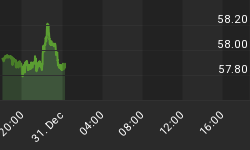
"If the bubbles collapse, we can always take it down."
The accolades have become, well, rather inflated.
Have they been deserved and, if not, what will be the cost to society?
When the glow ends, his future posterity may become different to today's instantaneous posterity. During the 1920s' asset inflation, the treasury secretary had a higher profile than the Fed chairman. Indeed, within the Federal Reserve System, the head of the New York Fed enjoyed a greater profile than the system's chair.
History suggests a rule. The bigger the bubble, the greater the esteem held for the perceived agent of prosperity. For example, in the late 1920s, Andrew Mellon was celebrated as the greatest treasury secretary since Alexander Hamilton.
In the early 1930s, he was vilified.
Even someone as qualified as Milton Friedman has joined the celebration. The Nobel Laureate's op-ed piece in Tuesday's WSJ included: "Alan Greenspan's remarkable performance as Fed chairman demonstrated that it is possible to maintain stable prices."
No matter how it's sliced and diced, the statement doesn't fit with the record provided by the Bureau of Labour statistics (BLS), which is self-described as "the principal fact-finding agency for the Federal Government in the broad field of economics and statistics".
Mr. Greenspan's term began in August, 1987 and one of the accolades celebrates his intervention in the money market of 1987. What nonsense! This assumes that panics, without intervention, would run forever. That one was simply a correction off a huge "overbought" that was turned into a route by a self-feeding mechanism called "Portfolio Insurance".
| PRICE STABILITY AS DEFINED BY MILTON FRIEDMAN | ||
| Producer Price Index | Consumer Price Index | |
| August, 1987 | 103.5 | 114.4 |
| December, 2005 | 163.0 | 196.8 |
| Gain | + 57.5% | + 72% |
So during Greenspan's reign, the purchasing power of the consumer's dollar has been diminished by 72% and this is celebrated as "stability".
Deliberate depreciation of the purchasing power of currency has always and will always be considered as state theft.
Of course, this has been disguised and promoted as beneficial "policymaking". This tout claims that only uniquely wise manipulations of the purchasing power of currency and the rates of interest can keep a recovery going.
On the other hand (to use an economics cliché), only wise manipulations can prevent a contraction or panic from lasting forever.
In this paradox, the economic establishment is caught somewhere between a crock and a hard place.
Naturally, the public has been adjusting its behaviour to accommodate the scam and has been leveraging up on soaring asset prices. The prospect that is becoming rather dangerous is that the seemingly relentless experiment in currency depreciation has driven the savings rate down.
According to the BLS, the savings rate when "The Maestro" took office was 6.7% of disposable income. On the December report, this had dropped to 0.7%. The public is fully convinced of the Fed's abilities to depreciate forever.
This is the first time since 1932 and 1933 that the personal savings rate has been negative for a full year.
The public seems to know what the economic establishment deigns not to know. Asset prices are soaring (in part) due to a relentless policy of currency depreciation and the public has run down their savings against the play.
However, this and the inevitable consequences of a bubble are not to be discussed in these terms in polite society.
The accolades seem more due to the fact that a libertarian economist, which Greenspan was, has been corrupted by the powers of office and has presided over the most reckless party in financial history.
















